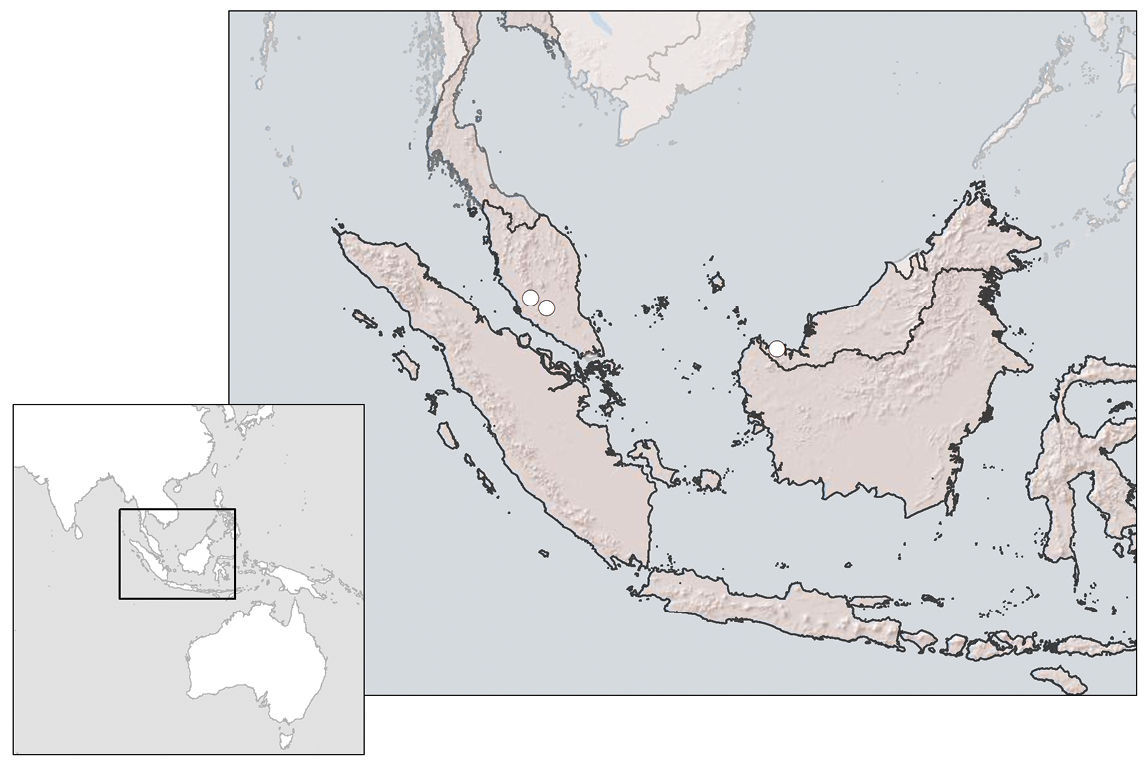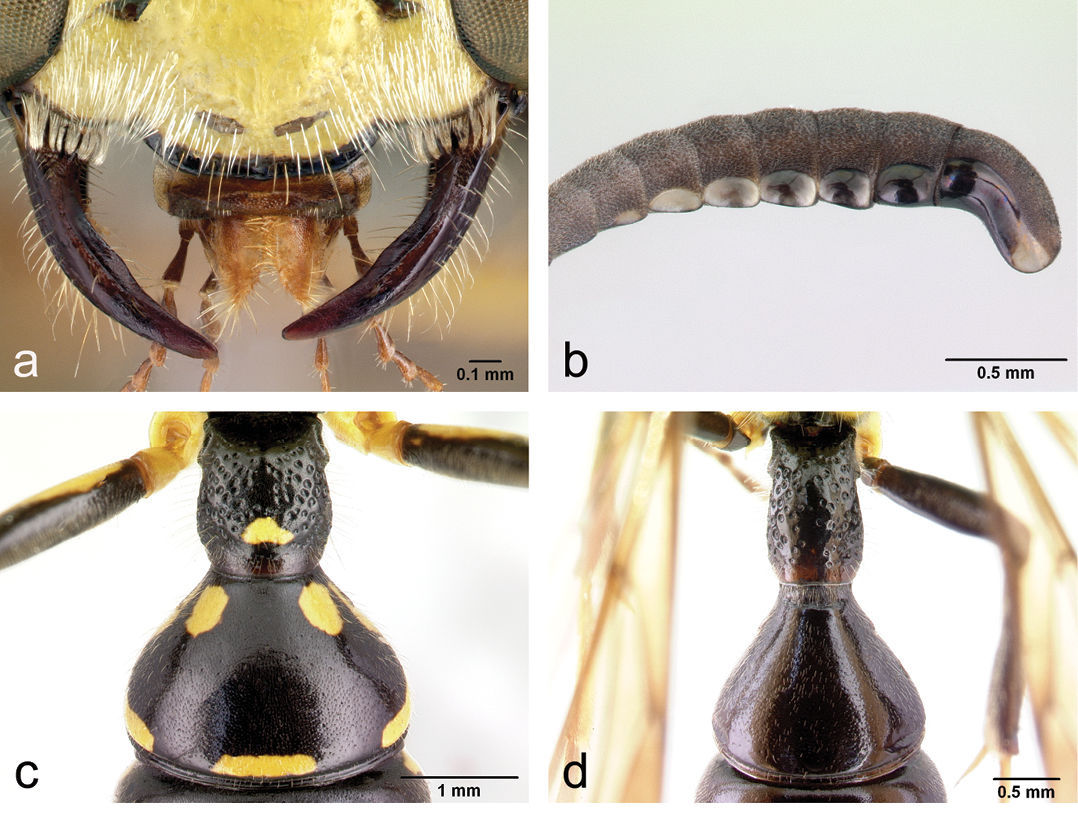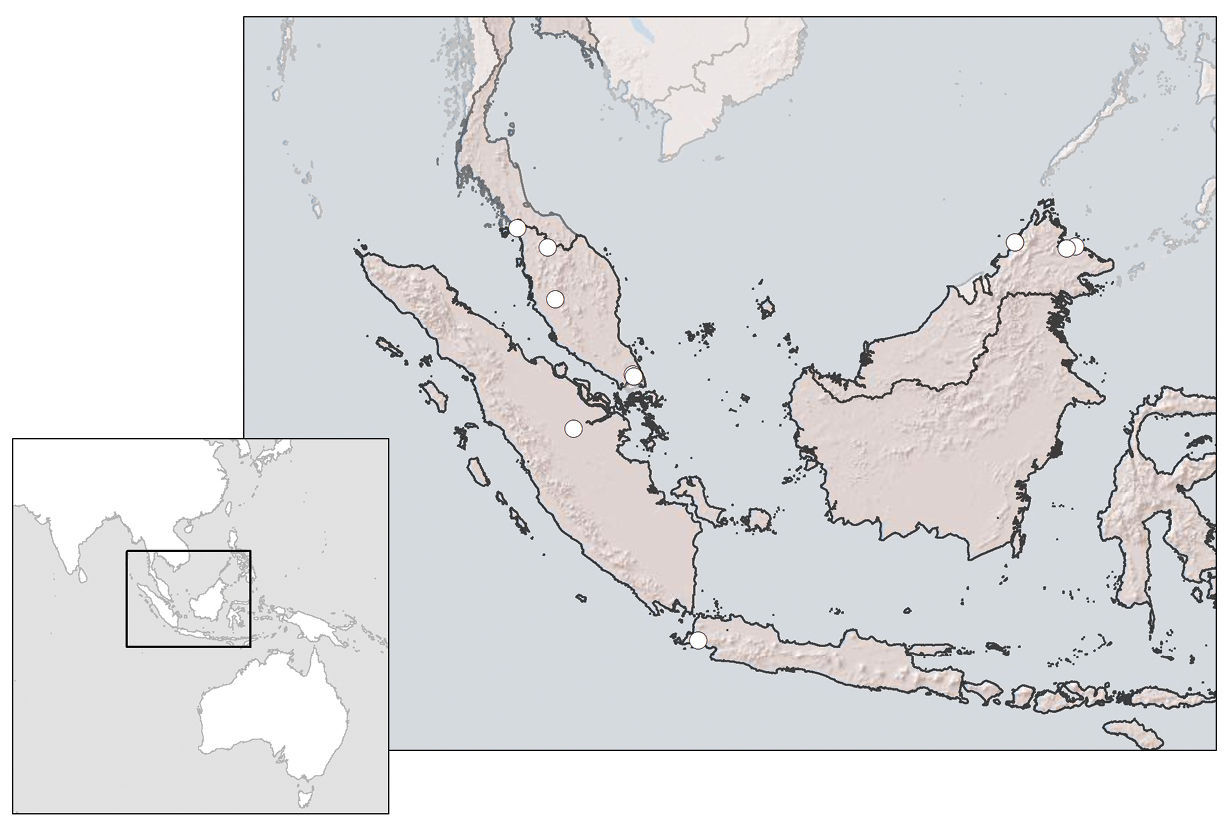






(C) 2010 Wojciech J. Pulawski. This is an open access article distributed under the terms of the Creative Commons Attribution License, which permits unrestricted use, distribution, and reproduction in any medium, provided the original author and source are credited.
For reference, use of the paginated PDF or printed version of this article is recommended.
Malaygorytes konishii Nemkov, 1999 (now Argogorytes konishii) from Western Malaysia is synonymized with Argogorytes matangensis (Turner, 1914) from Eastern Malaysia. Cerceris bantamensis van der Vecht, 1964 from Java is synonymized with Cerceris ferox F. Smith, 1856 (which also occurs in Sumatra and Malaysia). Recognition characters of the two species are discussed and illustrated.
Indonesia, Malaysia, Malaygorytes konishii, Argogorytes matangensis, Cerceris bantamensis, Cerceris ferox
While incorporating the sphecid collection of the late Giles C. Roche, recently transferred to the California Academy of Sciences, I found two species that I have confirmed to be junior synonyms. Details are provided below.
The following are the abbreviations used in the text: BMNH: British Museum (Natural History), London, United Kingdom (currently: The Natural History Museum). CAS: California Academy of Sciences, San Francisco, California, USA. RMNH: Rijksmuseum van Natuurlijke Historie (currently: Nationaal Natuurhistorisch Museum), Leiden, the Netherlands.
TaxonomyThe only female of this species in the CAS collection agrees to perfection with the type of Argogorytes matangensis and both specimens fit very well the good description of Malaygorytes konishii by
Male unknown.
Argogorytes fuliginosus Tsuneki, 1968, from Taiwan, whose type I have also examined, is similar to matangensis in having double-edged terga and a small preapical fossa on the scutellum as well as a conspicuously ridged mesopleuron. It differs in having the mesopleural ridges attaining the mesopleural signum, the legs all black, and all wings conspicuously infumate.
(Fig. 2).MALAYSIA: Pahang: Genting Tea Estate, Genting Sempah (1 ♀, CAS). Nageri Sembilan: Pasoh Forest Reserve (
Argogorytes matangensis (F. Smith), female: a scutellum (arrows indicate scutellar fossa) b mesopleuron c left wings d pygidial plate e gaster in dorsal view.
Collecting localities of Argogorytes matangensis (F. Smith).
In his description of Cerceris bantamensis, based on a single male, van der
Cerceris ferox F. Smith, female: a head in frontal view b clypeus in frontal view c mesoscutum in dorsal view d propodeum in dorsal view e thorax and propodeum in anterolateral view (arrow indicates vertical prominence) f thorax and propodeum in lateral view (arrow indicates vertical prominence).
Cerceris ferox F. Smith: a male clypeus in frontal view b apical flagellomeres of male c gastral terga I and II of female d gastral terga I and II of male.
Collecting localities of Cerceris ferox F. Smith.
(Fig. 5).INDONESIA: Sumatra: no specific locality (1 ♀, BMNH, holotype of Cerceris ferox). Java:Bantam: Malingping (1 ♂, RMNH, holotype of Cerceris bantamensis). EAST MALAYSIA: Sabah: Kota Kinabalu (1 ♀, CAS, as Jesselton), Poring Springs in Kota Kinabalu (1 ♀, 1 ♂, CAS), Sandakan (1 ♂, CAS), Kampung Ulu Dusun (2 ♀, 1 ♂, CAS). WEST MALAYSIA: Johore: Kota Tinggi (1 ♂, CAS), Sungai Seluyut (1 ♀, 3 ♂, CAS). Perak: Tapah Hills (1 ♀, CAS). Perlis: Kangar (1 ♂, CAS). THAILAND: Yala (= Jalor): Biserat (Bingham, 1903, 1905).
I sincerely thank David G. Notton, The Natural History Museum, London, United Kingdom, for sending the holotypes of Argogorytes matangensis and Cerceris ferox, and Rob de Vries, Nationaal Natuurhistorisch Museum, Leiden, Netherlands for sending the holotype of Cerceris bantamensis. Robert L. Zuparko kindly read the manuscript and provided useful suggestions. Comments by Pavel G. Nemkov, Vladivostok, Russia, are also appreciated. Erin Prado took the illustrations using Automontage software package by Syncroscopy, Jere Schweikert prepared a database for map localities, and Michelle Koo generated the distribution maps using GIS program.




